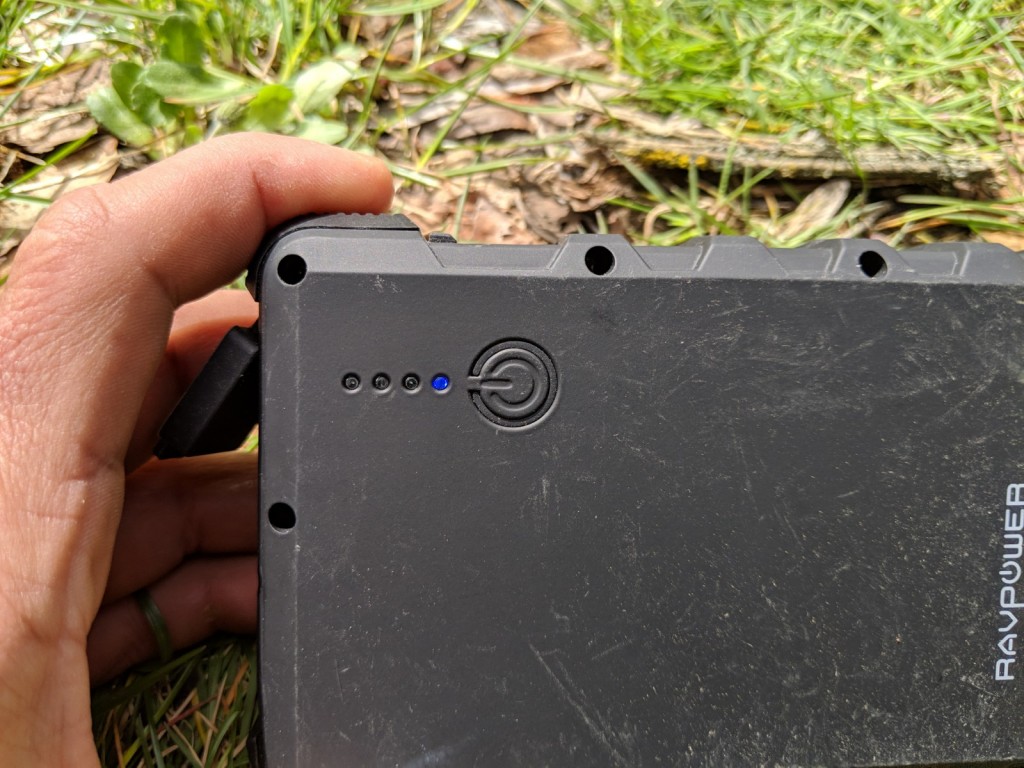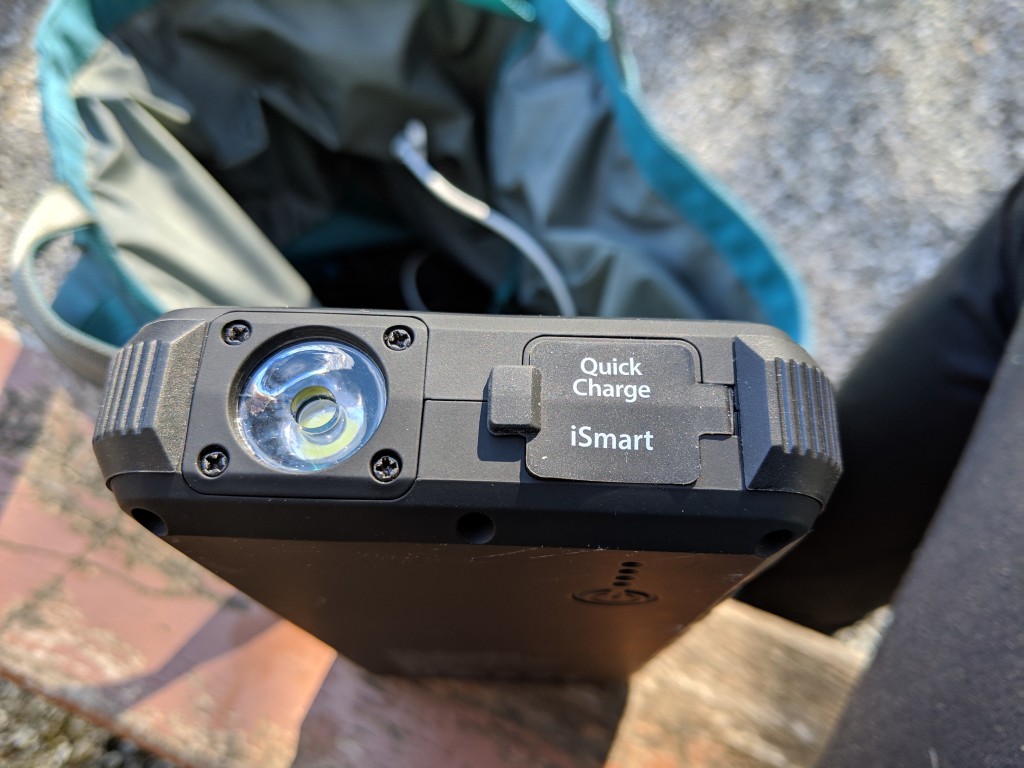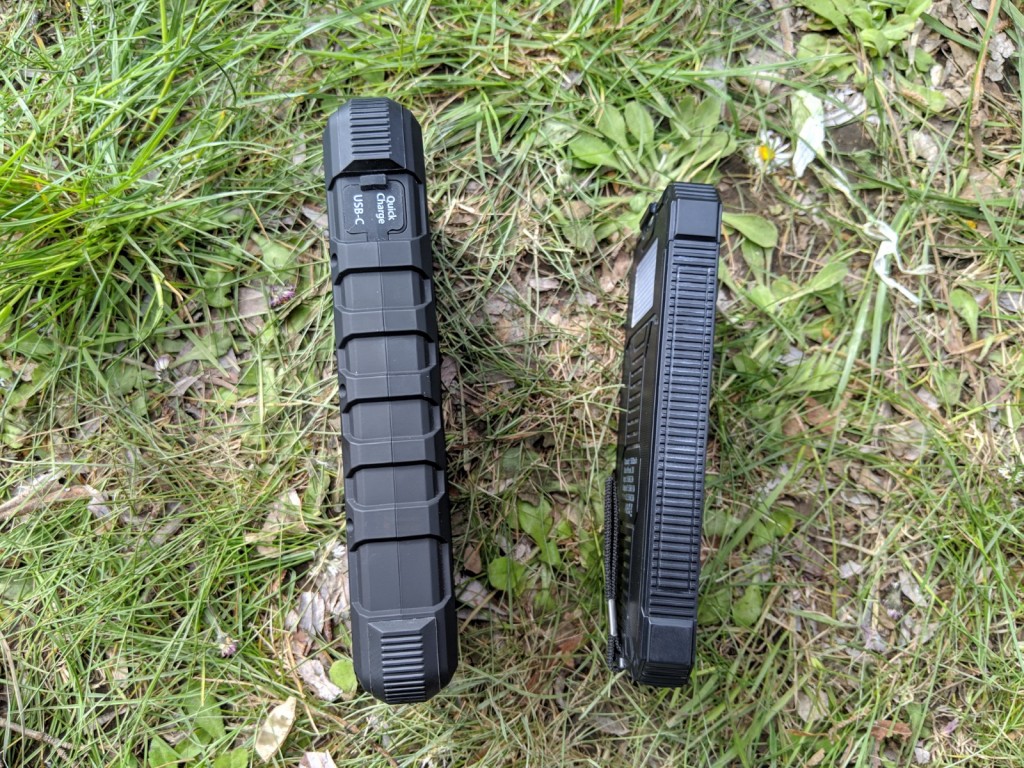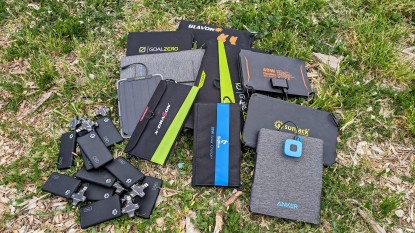RAVPower 25,000mAh Review
Our Verdict
Our Analysis and Test Results
Quick to charge but slow to refill, the RavPower receives high scores in charging speed but falls short in other metrics.
Performance Comparison
Charge Interruption Recovery
Again, the same issue arises with the RavPower that we encountered with the Renogy 15,000mAh and the Qi power bank. All three of these batteries rely on solar as a back-up only; that means that an interruption in solar input to the panels does not interrupt the charge delivered to your device. On the other hand, it means that these 2-watt panels will take a few days of full sun exposure to recharge fully. This issue is only a detraction if you plan to solely rely on solar to keep your devices charged. If this is the case, check out a larger capacity panel, like the Renogy 10W.
Charging Speed
With 25,000mAh of power, we hardly needed to recharge the Ravpower during our testing period. We used this battery pack/panel to charge our phone eight times without needing to replenish its power. The RavPower charged our phone at roughly the same rate a wall charger would, filling our Pixel 3's battery within two hours. This charge time is faster than the Qi, which has only 10,000mAh of power. It was also more efficient than the Renogy 15,000mh but is significantly heavier.
Multiple Device Charging Speed
The number of ports on the 25,000mAh seemed a bit like overkill to us, though it depends on what you're after; the panel has three different ports with varying maximum outputs. We rarely needed to charge three devices simultaneously, and unfortunately, the iSmart USB port didn't work on most occasions. We appreciated that the RavPower has a USB-C port that works as both an input or an output port, depending on whether you are charging a device or refilling the battery pack itself. The Ravpower charged both a Pixel 3 and a Kindle almost 9% over 30 minutes. In comparison, the Renogy 15,000 only charged these two devices 4% and 5% respectively, which makes sense, as the RavPower is a more powerful panel.
Durability
The RavPower has a similar feel to the Qi in terms of its construction. Both panels have a soft silicone material that protects the outside of the battery pack. In our experience, the RavPower functioned as intended over the three months we used it. The only issue with durability that we had was the finicky nature of the iSmart USB port, which occasionally would not register when we plugged a device into it. Luckily, the battery pack has other options, but this did not bode well for the overall health and longevity of the panel's USB ports.
Weight and Portability
Here, the RavPower falls short. The battery pack/panel weighs 19 ounces or 1.2 pounds; this figure is relatively heavy, considering the size of the battery. To casually throw this in your bag for a day hike feels like putting a brick in your backpack. The weight was a detraction for us and made us unwilling to bring the battery anywhere that required carrying it, especially since the solar charge function is so incredibly slow. These limitations make the RavPower a fairly specific product in terms of use. We preferred the Renogy 15,000 since it is useful, but light enough to carry in our backpack without thinking about it.
Best Application
The weight of the RavPower limits its applications and is best used at base camp or when car camping. That way, it can sit in the sun of the dashboard and trickle charge your devices while you are away from camp during the day. It's ideal for weekend trips, since you can fill up the battery pack at home instead of relying on solar to keep it topped off.
Value
Sold for $60 online, the RavPower is a battery pack of fairly good value. Compared to its less-powerful competitor, the Qi, the RavPower is more effective, though much heavier. The Renogy 15,000 is perhaps the best bet in terms of value for this style panel, ringing in at $30.
Conclusion
Overall, the RavPower performed well during our testing period. It charges devices quickly and has a large capacity, which equates to it not needing to be recharged as often as some of its competitors. The major downsides to this panel were its finicky USB ports and its weight, which seriously limited the circumstances of which we were willing to use the panel. For basic charging needs when car camping or traveling, the RavPower will do the trick, but for longer trips, we would recommend something lighter.










